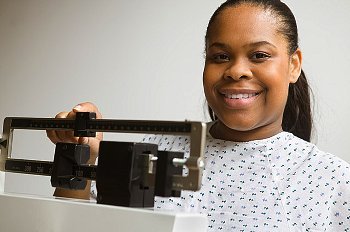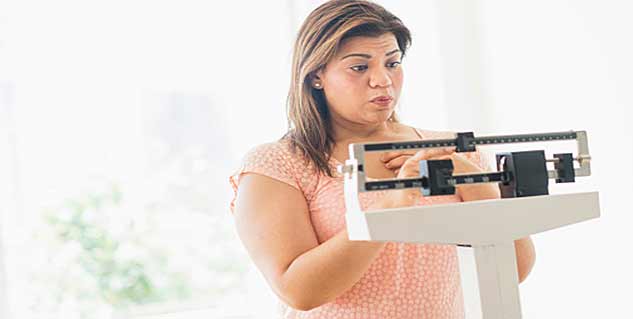Dysphagia risk due to myositis, dermatomyositis and polymyositis
 Dysphagia risk is due to myositis, dermatomyositis and polymyositis. Myositis is a condition referring to inflammation of the muscles. Symptoms of myositis include muscles weakness, tripping, falling, and fatigue after standing or walking. It can also feel similar to having a constant flu.
Dysphagia risk is due to myositis, dermatomyositis and polymyositis. Myositis is a condition referring to inflammation of the muscles. Symptoms of myositis include muscles weakness, tripping, falling, and fatigue after standing or walking. It can also feel similar to having a constant flu.
Dermatomyositis is a condition that affects the skin and the muscles and can even progress to organs and joints. It can lead to skin rashes, muscle pain and tenderness.
Polymyositis affects different muscles in the body, especially the shoulders, hips and thighs. No skin rash is present with polymyositis. Muscle weakness can vary on a daily or monthly basis, but without treatment it can get progressively worse. Getting up from a chair, lifting objects and going up stairs can all be quite difficult. Pain and weakness can get so severe that even holding up your head becomes a struggle.
Both dermatomyositis and polymyositis are autoimmune diseases. It is unclear as to why the body attacks itself in dermatomyositis, but polymyositis has been associated with cancer, diabetes and thyroid disease.
Dysphagia and myositis
 Dysphagia is difficulty swallowing and it can be a complication of myositis. In order to swallow the body goes through three phases: oral, pharyngeal and esophageal.
Dysphagia is difficulty swallowing and it can be a complication of myositis. In order to swallow the body goes through three phases: oral, pharyngeal and esophageal.
Oral phase: sucking, chewing and moving food/liquid down to the throat.
Pharyngeal phase: start of the swallowing reflex. Food is squeezed down the throat, which closes off the airways to prevent food or liquid from entering and prevents choking.
Esophageal phase: relaxing and tightening of the openings at the top of the esophagus and squeezing the food down the esophagus into the stomach.
In dysphagia a person can have difficulty in the pharyngeal phase and can experience the following signs and symptoms:
- Pain
- Excessive saliva
- Persistent coughing
- Heartburn
- Choking
- Nighttime coughing
- Feeling like something is stuck in your throat or chest
- Weight loss or dehydration
- Taking much longer to finish meals
Treating dysphagia in myositis patients
There are many different treatments when it comes to treating dysphagia in myositis patients, including:
- Modifying how you eat – tilting your head back, for example
- Using dilators to increase the size of the esophagus
- Making a small cut in the esophagus muscle fibers to widen the passageway that food goes through
- Inserting a tube directly to the stomach that bypasses the swallowing process
- Feeding tubes
- Some patients get relief from an electrical simulation treatment
Aside from these treatment options, there are also tips you can use to help ease eating difficulty.
- Take small bites and sips.
- Concentrate while eating – avoid talking or other distractions.
- Avoid foods that can trigger coughing – try to stick with foods that are more easily consumed.
- Ice down the throat prior to eating.
Myositis types: Dermatomyositis and polymyositis
Dermatomyositis and polymyositis share many symptoms, including:
 Weak and tired muscles
Weak and tired muscles- Inflamed muscles
- Generally feeling unwell
- Weight loss
- Night sweats
What sets the two apart is that in dermatomyositis a rash can appear on the skin as well as swelling of the skin.
Dermatomyositis can affect adults and children and is most commonly found in women. Polymyositis is also more common in women and generally affects those over the age of 30.
There is no cure for dermatomyositis, but treatment can help improve daily activities and relieve symptoms. Because polymyositis is often associated with other health conditions, it may be beneficial to treat the other condition in order to relieve symptoms.
Dysphagia in dermatomyositis and polymyositis is a risk factor for cancer
A Polish study revealed that dysphagia in both dermatomyositis and polymyositis is a risk factor for cancer. Risk factors for cancer in individuals with dermatomyositis and polymyositis include older age, being male, dysphagia, skin necrosis, rapid onset of the disease, elevated creatinine kinase (CK) and C reactive protein (CRP), and an increase in the erythrocyte sedimentation rate (ESR).
Treating polymyositis and dermatomyositis
Treatments for polymyositis and dermatomyositis are done in similar ways. Treatment options for the conditions include:
- Medications – steroids
- Infusions of immunoglobulin – antibodies that stop the immune system from attacking itself
- Exercise and physiotherapy – when myositis is very active, activity is not recommended but when mild, exercise is a good option. Aerobic exercise is beneficial to maintain muscle strength and improve stamina. A physiotherapist can monitor your movements and offer guided feedback and tailor a regime specifically for you.
Myalgia and myositis: Know about muscle pain and inflammation
Myalgia and myositis both cause discomfort in the muscle, but they are very different conditions in the sense that one creates muscle pain and the other inflammation. Myalgia means muscle pain or aching. An example of a myalgia would be the ailment fibromyalgia. Continue reading…
-
Things to Take into Consideration to Lose Weight Finally
Until the process of starting your weight loss method. There are sever
-
Burn Unwanted Weight And Shed Pounds - Even Whenever You Are Resting
Burn body fat 24 hrs a day is basic. Yes
-
Rapid Weight Loss Products - How Genuine Are They?
Its no surprise that the number of searches for terms relating to wei
-
Lose Belly Fat To Look Better And Live Longer
Unwanted fat can develop anywhere on the human body such as legs, arms
-
Weight loss- The right way
The thought of having a perfectly toned body or fitting into your f
-
Maqui Berry Review and Facts
Maqui Berry is recognized as a Super foo
- DON'T MISS
- Essentials Of Hypnosis For Weight Loss
- Thanksgiving Dinner On A Dime
- Weight Loss And The Theory Of Constraints
- Weight Watchers: Watching your weight the smart way
- Best Weight Loss Practices
- Weight Loss Its Routine
- BodyGem RMR Personalized Weight Management Program
- Phen375 Fat Burner Pills – Top Rated Weight Loss Pill For Fast Effects
- Some Highly Productive Weight Loss Recommendations
- Tips to lose weight on your butt




